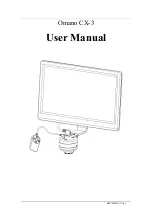
GUI Reference
R&S
®
ZNC
138
User Manual 1173.9557.02 ─ 13
chapter 3.3.7, "Delay, Aperture, Electrical Length"
Application:
Transmission measurements, especially with the purpose of investigating
deviations from linear phase response and phase distortions. To obtain the delay a fre-
quency sweep must be active.
Tip:
The cables between the analyzer test ports and the DUT introduce an unwanted
delay, which often can be assumed to be constant. Use the "Zero Delay at Marker" func-
tion, define a numeric length "Offset" or use the "Auto Length" function to mathematically
compensate for this effect in the measurement results. To compensate for a frequency-
dependent delay in the test setup, a system error correction is required.
Note:
The delay for reflection factors corresponds to the transmission time in forward and
reverse direction; see "Length and delay measurement" in
Remote command:
GDELay
Aperture
Sets a delay aperture for the delay calculation. The aperture Δf is entered as an integer
number of steps. An aperture step corresponds to the distance between two sweep
points.
Properties:
The delay at each sweep point is computed as:
f
deg
meas
g
360
,
where the aperture Δf is a finite frequency interval around the sweep point fo and the
analyzer measures the corresponding phase change ΔΦ.
Trace Settings
















































